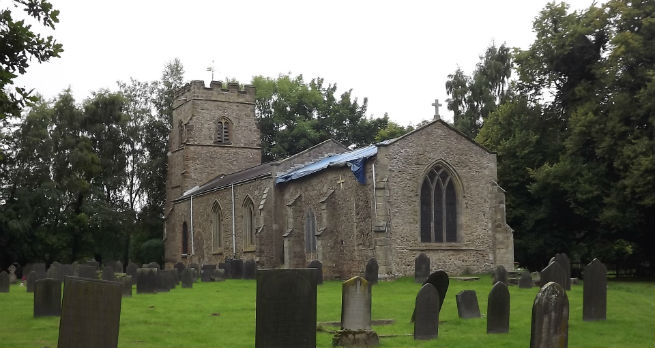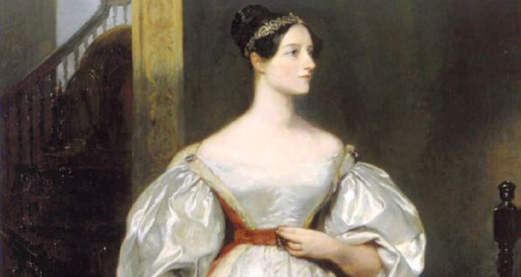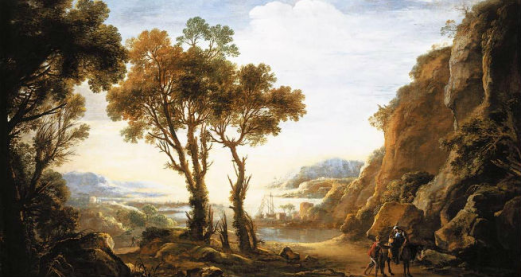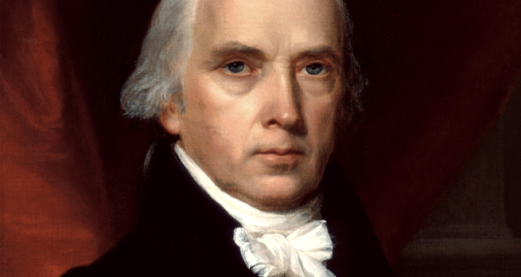About ten or twelve miles from Leicester, in a westerly direction, situated on rather high ground and surrounded by trees, is the small village named Kirkby Mallory.
It is composed of a few rows of cottages; a farm house or two; a public house of considerable size standing near the crossing of four roads; a substantial parsonage-house, hidden in trees; and a hall neither attractive to the antiquary nor pleasing to the artist, in its exterior, but pleasantly placed and agreeably relieved by foliage.
Quite apart from the village - border on its western side by the park, on its eastern and northern by private grounds, and on its southern by a spinney, stands the Church.
 All Saints Church, Kirkby Mallory
All Saints Church, Kirkby Mallory
A stranger who passes by the public-house, in the direction of the hall, will find the street conducts him through an avenue of shrubs and evergreens to the porter's lodge, and there, turning to his left, he discovers a neat, well-kept pathway, with an avenue of old trees on his right hand. At the remote end of the pathway are the gate of the churchyard, the tower of the edifice, and the cenotaph we are about to describe.
In summer, the prospect from this rural walk must be sweet and charming. The sloping green-sward of the park, the distant woods (the in all their "garniture of green"), and the undulating scenery, lighted up by the rays of the glorious sun, cannot fail to inspire the heart of the lover of nature with many delightful emotions.
Now, however, the picture is chill and desolate; and there is nothing to solace the eye for the absence of the accustomed beauties. But as our purpose is to describe the church and its cenotaph - the resting place of the dead and the memorial of one departed - perhaps the sad prospects of the parting year form a fitting introduction to the theme.
A glance at the history of the place will be necessary to our account. Kirkby, its ancient name, implies that it was a Danish settlement, distinguishable from others around, at the time it was first formed, by the presence of a church within its precincts. Probably the first Christian place of worship in this neighbourhood, a thousand years ago, stood on this spot, long before the present structure was raised, and to it the scanty population, half-Pagan and half-Barbarian, of adjoining hamlets, resorted - their faith in their deities, and their heathenish practices, being hardly yet abandoned.
At the Conquest, Hugh de Grentmesnil held the lordship. Afterwards, the Mallories became its owners, and as there were other Kirbys and Kirkbys (both names being identical in origin) this Kirkby was known from the others as Kirkby Mallory.
The family of this name was seated here from the reign of Henry the Third until that of Edward the Third, during five or six generations. The last of his line, Anketil Mallory, left two heiresses, Margery and Beatrice - one of whom married Sir Robert Moton, Knight, of the neighbouring village of Peckleton, into whose hands the lordship passed.
It had a succession of proprietors until William Noel, Esquire, became possessed of it in the year 1622. This gentleman was a descendent of the Noels of Dalby. His grandson, Sir William Noel, Baronet, married the eldest daughter of John, Lord Lovelace, who was baroness Wentworth in her own right.
From this pair descended in a direct line Edward Noel, Lord Wentworth, who married in 1743 Judith, daughter and heir to William Lambe, Esquire, of Northamptonshire. Their offspring were Thomas, Judith, Elizabeth and Sophia Susannah. The son succeeded his father as Viscount Wentworth, and was the last of the family who bore the title. He represented this county in parliament in the year 1774. He died without issue. His sister Judith was married to Mr Ralph Milbanke, of Yorkshire, afterwards Sir Ralph, and took to her husband the hall and manor of Kirkby, and he assumed the name of Noel. They had an only daughter, Anne Isabella Noel, who in 1815 gave her hand to the late Lord George Gordon Byron, the poet, whom she now survives.
It may well be supposed that the church, the near adjunct of the hall inhabited by the family, contains many memorials of its former inhabitants. The edifice is composed of a low tower in the Perpendicular Gothic, with angular buttresses; a nave of modern architecture, in the nondescript style; and a chancel, in which traces of Decorated Gothic are to be detected.
Externally, the church is plain, though clean; within, it has the appearance of an unusually long aisle, well whitewashed.
At one extreme, near the belfry, is a gallery for the choir; at the other is the communion table. In the latter part are monuments, nearly all in memory of members of the Noel family. On the left hand of the table is the effigy of Sir William Noel, Bart., who died in 1675, and who married (as above stated) the daughter of Lord Lovelace. The figure is boldly carved. It represents a man in the prime of life, with a flowing wig, and clothed in armour, with breast-plate and back-plate, neckcloth and shoulder-sash. His body is partly recumbent and partly raised on the right arm, a helmet lying between the right hand and the chest. The boots in which feet are encased are spurred, and are very close imitations of the very objects themselves.
Besides this, there are, near the communion table, a stone escutcheon of Sir William Noel, Esquire, in relief and vividly painted; a pensile tablet, in imitation of a curtain, to the memory of Sir John Noel, Bart.; a tablet to the memory of Thomas Noel, Esquire, who was mortally wounded in a sea-engagement with the French in the year 1756; a tablet to the memory of Sir Clobery Noel, Bart., on which are sculptured two medallions; and, opposite to this, is a monument to Edward Noel, viscount Wentworth, and his viscountess. It is a tasteless production.
Near the pulpit is a marble tablet, recording the decease of Mrs Catherine Noel, the mother of Charles Noel, Esquire, and on the other side a modest record of the decease of Caroline, daughter of John Russell, Esquire, and the Baroness de Clifford.
The oldest monument in the church is a floor-slab of the date of Queen Elizabeth, with an incised representation of Richard Dilke and his two wives on the surface.
The staircase leading to the gallery is a curiosity in its way; but there is nothing further deserving even a passing mention in the edifice.
Thus far, then, of the church. In the yard adjoining are scattered a few gravestones to the memory of the ancestors of the tenants and others resident in the village. Several of these record the decease of the Fulshaws, a respectable middle-class family, settled in Kirkby for more than two centuries.
The interest of the spot is, however, now centred in one object. The dust of many a knightly Noel lies mouldering within the church, and the remembrance of them may, perchance, fade away with their ashes. But there is one name united with the Noels which the world will not willingly let die, and there is one form now sleeping far away, round which many associations of touching interest cling - a form still remembered by the dwellers in this rural district: it is that of Byron's daughter, Ada.
Those of our readers who are familiar with the mournful though beautiful lines in Childe Harold, and who recall to mind the career of its author - a magnificent meteor-flash suddenly dying in darkness and gloom - will inseparably blend their remembrances of the poet with that of his devoted attachment to his daughter. Who does not retain in memory the opening lines of one of the cantos of the poet's pilgramage?
Is they face like thy mother's, my fair child!
Ada! sole daughter of my house and heart?
When last I saw thy blue eyes they smiled,
And then we parted - not as now we part,
But with a hope
A hope never, alas!, realised; and in the concluding stanzas a strain of painful foreboding is accompanied with a tender picture of the domestic joy which the poet's heart yearned to experiences
My daughter! with thy name this song begun—
My daughter! with thy name this much shall end—
I see thee not, I hear thee not,—but none
Can be so wrapt in thee; thou art the friend
To whom the shadows of far years extend:
Albeit my brow thou never shouldst behold,
My voice shall with thy future visions blend,
And reach into thy heart, when mine is cold,—
A token and a tone, even from thy father's mould.
To aid thy mind's development,—to watch
Thy dawn of little joys,—to sit and see
Almost thy very growth,—to view thee catch
Knowledge of objects, wonders yet to thee!
To hold thee lightly on a gentle knee,
And print on thy soft cheek a parent's kiss,—
This, it should seem, was not reserved for me
Yet this was in my nature:—As it is,
I know not what is there, yet something like to this.The child of love,—though born in bitterness,
And nurtured in convulsion. Of thy sire
These were the elements, and thine no less.
As yet such are around thee; but thy fire
Shall be more tempered, and thy hope far higher.
Sweet be thy cradled slumbers! O'er the sea,
And from the mountains where I now respire,
Fain would I waft such blessing upon thee,
As, with a sigh, I deem thou mightst have been to me!
All know the remainder of the story. An early decease on a foreign strand, while engaged in a wild enterprize, was the termination of his career.
"Ada" was married, when in her twentieth year, to William, Lord King, created in 1838 Earl of Lovelace, by whom she leave issue two sons and a daughter. Her eldest son is Byron-Noel, Viscount Ockham. She died about a year ago, and it is reported that her life was rendered unhappy, alike by suffering from a painful disease and sorrow. Her remains lie (as already hinted) in another country; but her mother, Lady Noel Byron, has, it seems, chosen that, in the old ancestral resting-place of the Noels, a cenotaph should perpetuate her name and remembrance.
The monument consists of a kind of niche or recess, constructed in a late style of Gothic. It rises to the height of fourteen or fifteen feet. At the side are pillars and buttresses. The whole is surmounted by a canopy, cinquefoiled and cusped, and completed above by a pointed gable, terminating in a finial. On each side, the pinnacles of the buttresses finish the outline of the upper part of the monument. In front, the recess is railed in, and on the upper part the following line is written in coloured letters:
Inscribed by the express direction of A. I. Noel Anno Domini, MDCCCLIII
Within, on the face of the back wall, these words and lines appear, to conclude the inscription:
Ada Augusta Lovelace; born Dec, 10, 1816; died, Nov, 27, 1852; to recal her memory.
"And the prayer of faith shall save the sick, and the Lord shall raise him up; and if he have committed sins, they shall be forgiven him" - James v, 15
Bow down in hope, in thanks, all ye who mourn;-
where'in that peerless arche of radiant hues
surpassing early tints,-the storm subdues!
Of nature's strife and tears 'tis heaven-born,
To soothe the sad, the sinning and the forlorn;-
A lovely loving token; to infuse;
The hope, the faith, that pow'r divine endures
With latent good, the woes by which we're torn.'Tis like a sweet repentance of the skies;
To beckon all those by sense of sin opprest,
And prove what loveliness may spring from sighs!
A pledge:-that deep implanted in the breast
A hidden light may burn that never dies,
But bursts thro' clouds in purest hues exprest!
The style of the cenotaph is appropriate to its purpose, and harmonises with that of the church. A more suitable spot could scarcely have been selected; and we can imagine that he poet, had he been living, and had the melancholy task of finding a site for his daughter's memorial devolved upon him, would not have chosen one more congenial to his feelings than this - where the turmoil of the world does not reach, where kindred lie buried, and where the trees of the park and the woodland-slopes alone break, by their rustle and by the murmur of the wind sighing through the branches, the solitude so grateful to the poet's soul, and so fitting to the scene where the dead repose.
Originally published in The Leicester Chronicle, or Commerical and Agricultural Advertiser, December 17th, 1853.




Rate and Review
Rate this article
Review this article
Log into OpenLearn to leave reviews and join in the conversation.
Article reviews